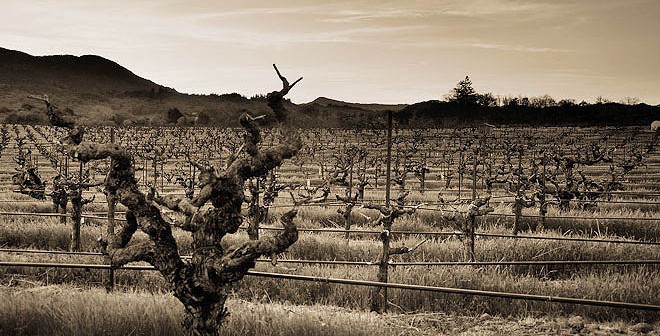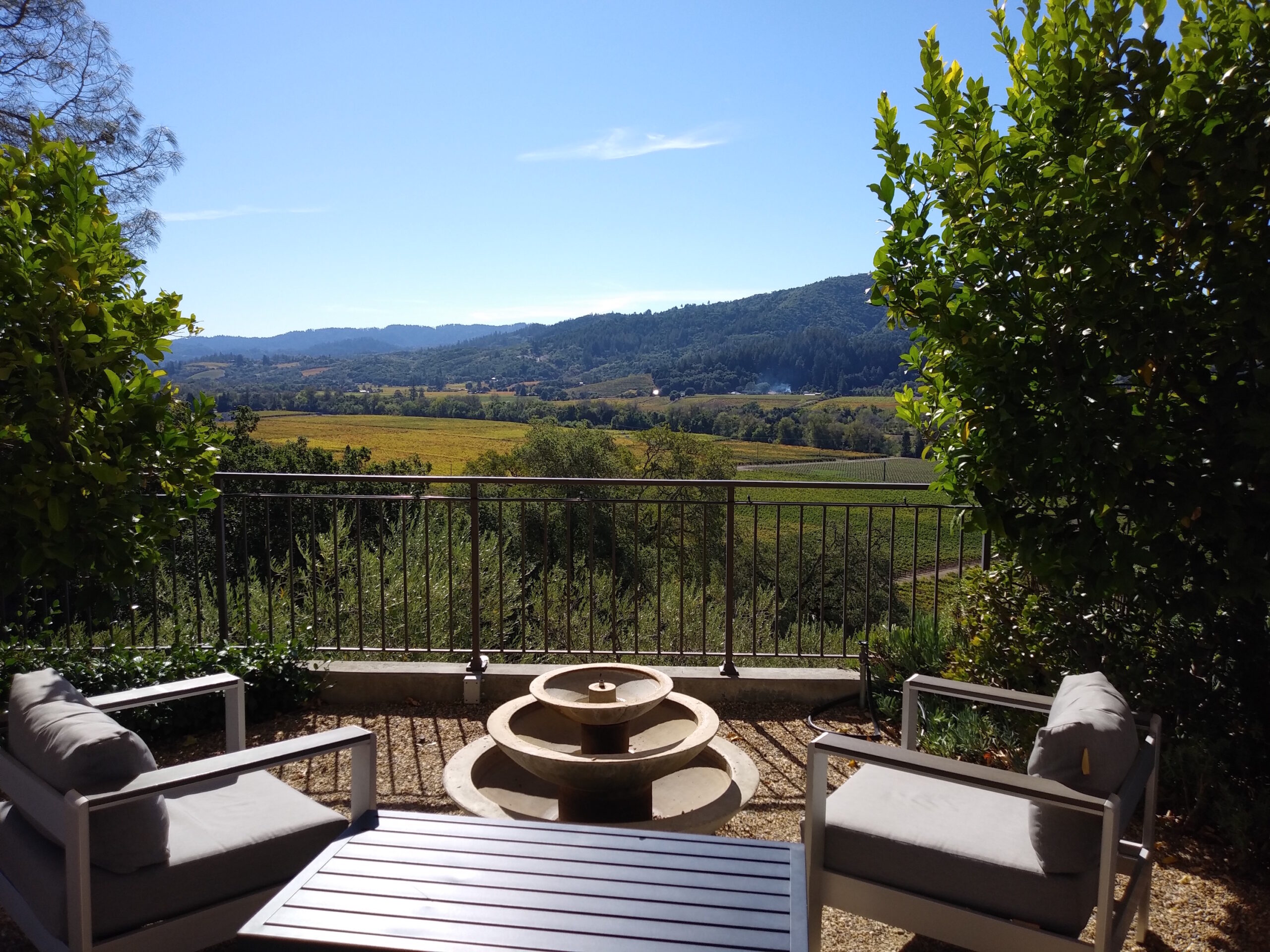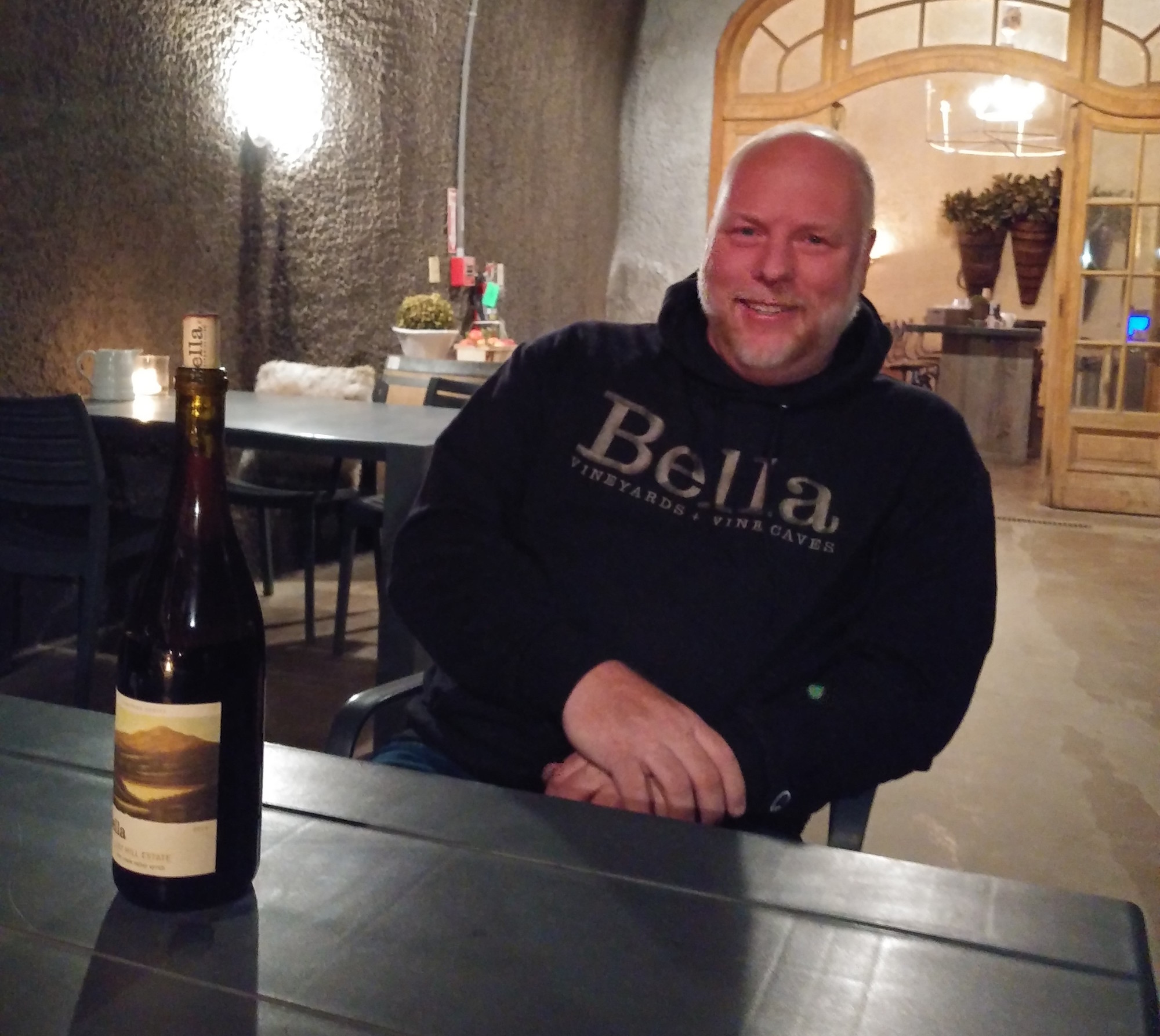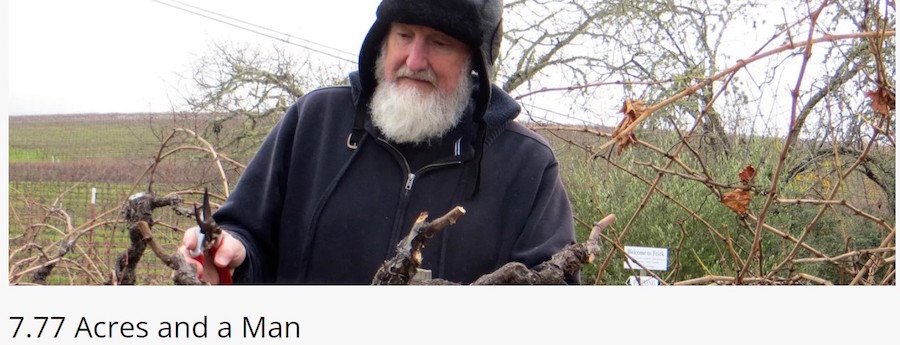In this final installment of my series of articles about alcohol levels in Zinfandel, we hear from two gentlemen who are on the forefront of preserving some of California great old vineyards.
Morgan Twain-Peterson of Bedrock Wine Co. (www.bedrockwineco.com) grew up with Zinfandel – literally. His father is Joel Peterson, founder of Ravenswood Winery and, according to the Bedrock website, Morgan started making wine at the age of five! Now he makes outstanding Zinfandels, Syrahs and other wines under his own Bedrock label. I posed my question to Morgan and this is what he had to say:
“Given the uneven cluster morphology of Zinfandel, with a tendency to ripen unevenly, there is a tendency for Zinfandel to be higher in alcohol than other varieties out there. That said, there are a couple factors influencing wine balance.
1) There is a HUGE difference in flavor profile between picking at 24.5 brix and soaking to 26 and getting 15%-15.5% alcohol and picking at 29, soaking to 33, and watering back to 26 to get the same level of alcohol. Unfortunately the latter practice is, by far, the most common practice. At Bedrock we tend to be very early pickers by industry standards, sometimes 2-3 weeks before other wineries, and we regularly flirt with 15% alcohol.
2) Site, vine age, and vineyard practice is incredibly important. Old vines that are dry-farmed or minimally irrigated tend to have earlier flavor development, which allows me to pick at lower sugar levels. This is not to say that others don’t pick late in the same vineyards as SOP. Vigorous vines, heavily irrigated vines, over-cropped vines all delay flavor development. In this situation the winemaker’s hand is forced and usually one must pick later to get the needed flavor development while praying the canopy holds up. That said, and it might be extreme, but if you have to pick at high brix to get flavor development you are probably growing the wrong variety, have an unsuitable site, or need to rethink farming practices.
3) I certainly think you can find balance in wines at higher alcohol. Turley, Biale, and Carlisle all play this out. However, it is a tricky tight-rope to walk.”
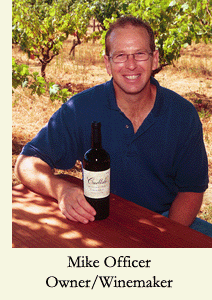
Mike Officer of Carlisle Winery (www.carlislewinery.com) has been making some of the best Zinfandels in California since the winery’s inaugural 1998 vintage. Long a proponent of saving the great old vine plantings, his single-vineyard bottlings are almost impossible to find unless you are on his mailing list. Mike’s response to my question:
“As a variety, Zinfandel seems to have a naturally higher sweet spot in terms of alcohol than many other varieties, likely due to Zinfandel’s differential ripening. Do some wines exceed that sweet spot? Sure, but that sin is not unique to Zinfandel. Frankly, I think way too much attention is given to alcohol levels. If pH and TA were required on the label instead of alcohol, I suspect we’d all be talking about acidity. In the end, it’s about balance, about alcohol, acidity, and fruit coming together to compose a wine that is harmonious and seamless. That may mean 15% alcohol. It may mean 12% alcohol. Alcohol alone is not necessarily an indicator of balance. I’ve had hot, unbalanced low-alcohol wines and I’ve had hot, unbalanced high alcohol wines. And making the whole conversation even more complex is the fact that we all taste differently. One person’s idea of balance may be another person’s bitter and harsh or thin and acrid. There are many truths in wine. Consumers need to taste and explore to determine what their truth is.”
As I expected, the ultimate answer is: It’s complicated. Zinfandel in particular is made in a lot of different styles and a lot of factors go into the ultimate end product. If you take away one thing from this series of articles, let me paraphrase Mike’s suggestion: The best solution is for the wine enthusiast to taste as many wines as possible to determine what best suits his or her palate. Thank you to everyone who helped me with this and thanks as well to the wineries that supplied photos.
###
Perlis Picks: Historic Vineyard Society’s Annual Vineyard Tour and Dinner
In today’s article, the input received was from Morgan-Twain Peterson of Bedrock Wine Co. and Mike Carlisle of Carlisle Winery & Vineyards.
Both Morgan and Mike have been key players in saving many of the old vineyards in California. As members of the Project Team of the Historic Vineyard Society, they focus on “educating the wine-drinking public on the very special nature of this precious and depleting state, national and global resource” as wells a compiling and maintaining “a comprehensive, fact-based and consistent directory of California’s Heritage Vineyards.” [Quotes are from the HVS website.]
Before the Historic Vineyard Society came into being, too many of California’s old vineyards were lost to development, or replanted to more profitable varietals. The work they are doing is very important, as well as being near and dear to my heart.
I just received this information from the HVS:
The Historic Vineyard Society is pleased to announce that its fourth Annual Vineyard Tour and Dinner will be held on Saturday, May 10 at the Robert Mondavi Winery in Oakville, California.
Vineyards to be toured include:
· To Kalon “I Block” (planted in the 1950s)
· Hayne (planted in the 1900s)
· Library (planted in the 1930s)
· Old Kraft (planted in the (1890s)
Following the vineyard tour, a dinner will be held at the Robert Mondavi Winery in Oakville. For more information and to purchase tickets visit the Historic Vineyard Society website at www.historicvineyardsociety.org.
The Historic Vineyard Society is a 501c3 non-profit dedicated to the preservation of California’s oldest vineyards.
Michael Perlis has been pursuing his passion for wine for more than 25 years. He has had the good fortune of having numerous mentors to show him the way, as well as a wonderful wife who encourages him and shares his interest. After a couple of decades of learning about wine, attending events, visiting wineries and vineyards, and tasting as much wine as he possibly could, he had the amazing luck to meet Eve Bushman. Now, as Contributing Editor for Eve’s Wine 101, he does his best to bring as much information as possible about wine to Eve’s Wine 101 faithful readers. (2013 Update: Eve and Michael announced Eve Wine 101 Consulting. Info is here: http://evewine101.com/press-releases/) Michael can be contacted at michaelthezinfan@aol.com.






